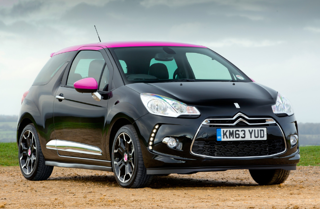Low rolling-resistance tyres have been available in the market since the 1990s.
Research and development by the major tyre manufacturers has delivered tyre designs and rubber compounds that reduce the amount of energy consumed by the tyre as it rotates.
So the engine has to work less hard to move the vehicle, which reduces fuel costs and also means that less CO2 is given off into the atmosphere.
When it was launched, the Michelin Energy Saver tyre, for example, saved about 0.2 of a litre per 100 kilometres compared to the average across all premium competitors, and reduced CO2 emissions by about 4g/km.
The majority of Michelin tyres now have low rolling resistance properties to reduce fuel consumption.
The very important point to note is that these developments have been made without a trade off in performance in other key areas such as wet braking and longevity.
To ensure that fleet mangers benefit from this fuel saving technology, they should investigate whether the tyres they purchase are in fact low rolling-resistance tyres.
Should a fleet manager have a direct relationship with a tyre manufacturer, or should this relationship be handled by a dealer or fast-fit company?
Earlier I talked about some of the reasons that a fleet manager needs to know about the tyres fitted to the vehicles under their responsibility.
The most knowledgeable people to talk to about any product are the people who make that product.
With the developments and innovations in the premium end of the market, the tyre manufacturer has the most up-to-date and accurate information.
If a fleet manager has a direct relationship with a tyre manufacturer, this provides the opportunity to negotiate any discounts if the volumes are appropriate.
The fleet manager can also be kept directly up-to-date with any tyre-related issues and the direction the market is moving, which will ensure they have the support needed to make informed and accurate buying decisions.
If the manager’s relationship is only via a dealer or fast-fit company, messages can become distorted and more time consuming as parties wait for answers to questions sent via a third party.
Michelin has always worked to spread the message about the importance of tyres, and to help customers maintain and use the correct pressures so as to get the maximum mileage.
We produce literature to help managers generate the awareness amongst drivers about tyre maintenance, and with a direct relationship this can be delivered direct to where it is needed.
You mentioned tyre maintenance. Please explain what you have in mind
The tyre is the only point of contact between the vehicle and the road surface so it plays a hugely important role.
The maintenance of the tyre is central to getting the best performance from it. These some of the key areas to pay attention to:
a) When fitting replacement tyres, ensure they are of the correct size and load index, and have the same speed symbol the vehicle manufacturer recommends.
When tyres are not fitted in complete sets of four, we advise that tyre types should not be mixed across an axle. It is important to contact your tyre dealer or a leading manufacturer to check any details.
Special care needs to be taken with 4x4 fitments where tyres should be used in identical sets of four, bearing in mind any specific recommendations from the vehicle manufacturer.
b) Encourage a regular visual inspection by the driver or fleet manager to check for tread wear, nails, stones, cuts or bulges.
Such preventative measures can stop a potential tyre failure and possible roadside breakdown.
c) Have the tread depth checked regularly by a professional tyre dealer who will respect the UK legal limit.
Car or van tyres should have at least 1.6mm of tread across the central three-quarters of the tyre breadth and around the entire circumference of the tyre.
Most tyres nowadays have tread wear indicators set into the main tread grooves that show when only 1.6mm of the tread remains.
When these indicators become level with the tread surface, the tyre needs to be replaced immediately.
d) Maintaining the correct tyre pressure is vital for both vehicle safety and tyre longevity.
Too little or too much air could adversely affect the vehicle handling and the tyre’s performance and durability.
Keeping the tyres at their correct pressure and using energy-efficient tyres also reduces your engine’s workload, so you will save fuel and reduce CO2 emissions too.
Someone driving with a tyre that is 7psi under-inflated (eg at 23psi rather than 30psi) will increase their fuel consumption by around 2%.
Over a year, 2% on an individual’s and then a fleet’s fuel bill is considerable. CO2 emissions will also be increased unnecessarily, damaging the environment.
Tyre pressures should be checked – using an accurate gauge – by the driver, a local service station or a tyre dealer.
Advice on the correct operating pressures will be found in the vehicle manufacturer’s handbook or marked on the vehicle. Pressures should be checked monthly and before long journeys when the tyres are cold. If appropriate, they should be adjusted for full loads or towing.
e) When replacing tyres, the preferred solution is to replace all four tyres together.
However, as vehicles wear their front and rear tyres at different rates this cannot always be done.
In this case, Michelin’s recommendation is to fit new tyres to the rear and move the part worn rear tyres to the front.
The reason for this is to maintain the best stability of the vehicle in extreme conditions of hard or emergency braking and cornering, particularly in wet or slippery conditions.
For 4x4 vehicles, always refer to the vehicle manufacturer’s recommendations when replacing tyres.
f) If the suspension alignment on a vehicle is not correctly maintained, rapid and irregular tyre wear can occur.
This can affect costs and the handling and safety of the vehicle.
If the suspension is misaligned by 4mm (just 2mm per wheel) on a vehicle with 15-inch wheels, for every mile you travel, the tyre is being forced sideways by 8.4 metres!
By following these pointers, a fleet manager and their drivers will get the best out of their tyres.
If you were to advise a fleet manager on the best practice when it comes to choosing their tyres, what would that advice be?
The first choice for a fleet manager should be for a premium quality tyre, the adage of ‘the more you pay, the better product or service you get’ generally works here.
A premium quality tyre is technically approved by the vehicle manufacturers as being the most suitable for use.
A fleet manager can get a lot of advice from the internet to help them start to formulate a policy, and can then have discussions with tyre manufacturers and distributors to help in making a decision.
The key points to remember are to look for a brand that offers safety, value for money, fuel saving, good product information, technical back-up, a strong brand image and good environmental credentials.
Value for money is sometimes missed by the fleet manager when deciding what brand to choose; they should take into account wholelife costs rather than just the initial purchase price.
Please provide further background on Michelin
Michelin is a main player in the world tyre industry with a sales network covering 170 countries.
It has 121,000 employees, and its 69 production plants in 19 countries produces around 190 million tyres and 16 million maps and guides each year.
As the world’s leading tyre manufacturer, Michelin has a long history of innovations aimed at making driving more economical, safer and more pleasurable.
To highlight this commitment to advances in tyre performance, Michelin spends around 4% of its annual turnover on research and development – more than any other tyre manufacturer.
To control its environmental impact, Michelin conducted a global assessment of its operations and products and this led it to focus on developing technologies aimed at reducing its tyres’ rolling resistance, increasing tyre life (to reduce the number of end-of-life tyres to be processed) and using raw materials that have a low environmental impact.
Since the end of 2007, 99.5% of output in volume terms has been produced in ISO 14001-certified plants.
In addition to tyres, Michelin runs local initiatives to keep drivers informed about the importance of checking their tyre pressures, not only for their own safety, but also to reduce fuel consumption.
Our ‘Fill Up With Air’ road show runs throughout the UK and Europe annually, and offers free tyre pressure checks and advice on tyre maintenance to both fleet and private drivers.
On the global stage, Michelin continues to actively encourage advances in sustainable mobility through its annual Challenge Bibendum rally. These events take place in a different country each year, and are supported by car, truck and motorcycle manufacturers from around the world along with component manufacturers, scientific institutions and non-government organisations.





















Login to comment
Comments
No comments have been made yet.